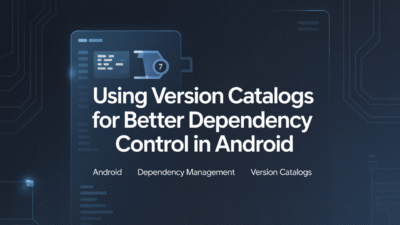When it comes to Android development, staying ahead of the curve means leveraging the most powerful tools available. While many developers are familiar with popular Jetpack components like ViewModel and LiveData, there’s a treasure trove of lesser-known Jetpack libraries that can significantly boost productivity, streamline architecture, and enhance app performance.
In this post, we’ll explore the Top 10 Undiscovered Jetpack Libraries that every advanced Android developer should consider integrating into their workflow in 2025.
1. Paging 3
The Paging library helps you load and display pages of data from a larger dataset—such as those fetched from a network or stored locally—without overwhelming memory or bandwidth. With Paging 3, you get built-in support for error handling, retry mechanisms, and multi-page sources, making it ideal for apps that rely on paginated APIs .
2. DataStore
As a modern alternative to SharedPreferences, DataStore provides a robust and asynchronous way to store small amounts of data. It uses Kotlin coroutines and Flow for data persistence, offering type safety and eliminating common pitfalls associated with SharedPreferences .
3. WorkManager
Although not entirely unknown, WorkManager is often underutilized. This library simplifies deferrable and guaranteed background work, even across device reboots. It’s especially useful for tasks like syncing data with a server when the device is idle and charging .
4. Navigation Component
Beyond basic fragment transactions, the Navigation Component offers deep linking, safe argument passing, and navigation graphs that provide a visual overview of your app’s flow. When paired with Jetpack Compose, it becomes an even more powerful tool for building complex UI navigation patterns .
5. SavedStateHandle
This component helps retain UI state during process death and recreation. Unlike ViewModel, which survives configuration changes but not process death, SavedStateHandle ensures critical UI data persists across app restarts without requiring manual serialization .
6. App Startup
App Startup allows developers to efficiently initialize components at application startup. It provides a structured way to manage dependencies between initialization routines, reducing launch time and improving overall performance .
7. CameraX
Building camera features into an Android app used to be notoriously difficult. CameraX, part of the Jetpack suite, abstracts away much of the complexity, offering pre-built use cases like Preview, Image Analysis, and Image Capture while maintaining flexibility for customization .
8. Security Library
Android’s Security library makes it easier to implement secure data handling practices, including encrypted file storage and secure key management using Android Keystore. This is essential for apps dealing with sensitive user information .
9. ConstraintLayout Helpers
While ConstraintLayout itself is well-known, its helper classes like Barrier, Guideline, and Layer offer advanced layout capabilities that can simplify complex UIs. These tools allow for dynamic positioning and alignment without custom code .
10. Tracing
Performance optimization starts with understanding where time is spent. The Tracing library enables developers to generate system-wide traces that help identify bottlenecks in rendering, networking, and computation. This is particularly useful when profiling apps on actual devices .
Final Thoughts
These Jetpack libraries represent just a slice of what the Android ecosystem has to offer beyond the commonly known components. As the platform evolves, so too do the tools that power modern Android development. Whether you’re building enterprise-grade applications or sleek consumer-facing interfaces, incorporating these advanced Jetpack libraries can make your development process faster, safer, and more maintainable .
By exploring and adopting these tools now, you position yourself ahead of the curve in 2025’s competitive mobile development landscape.
